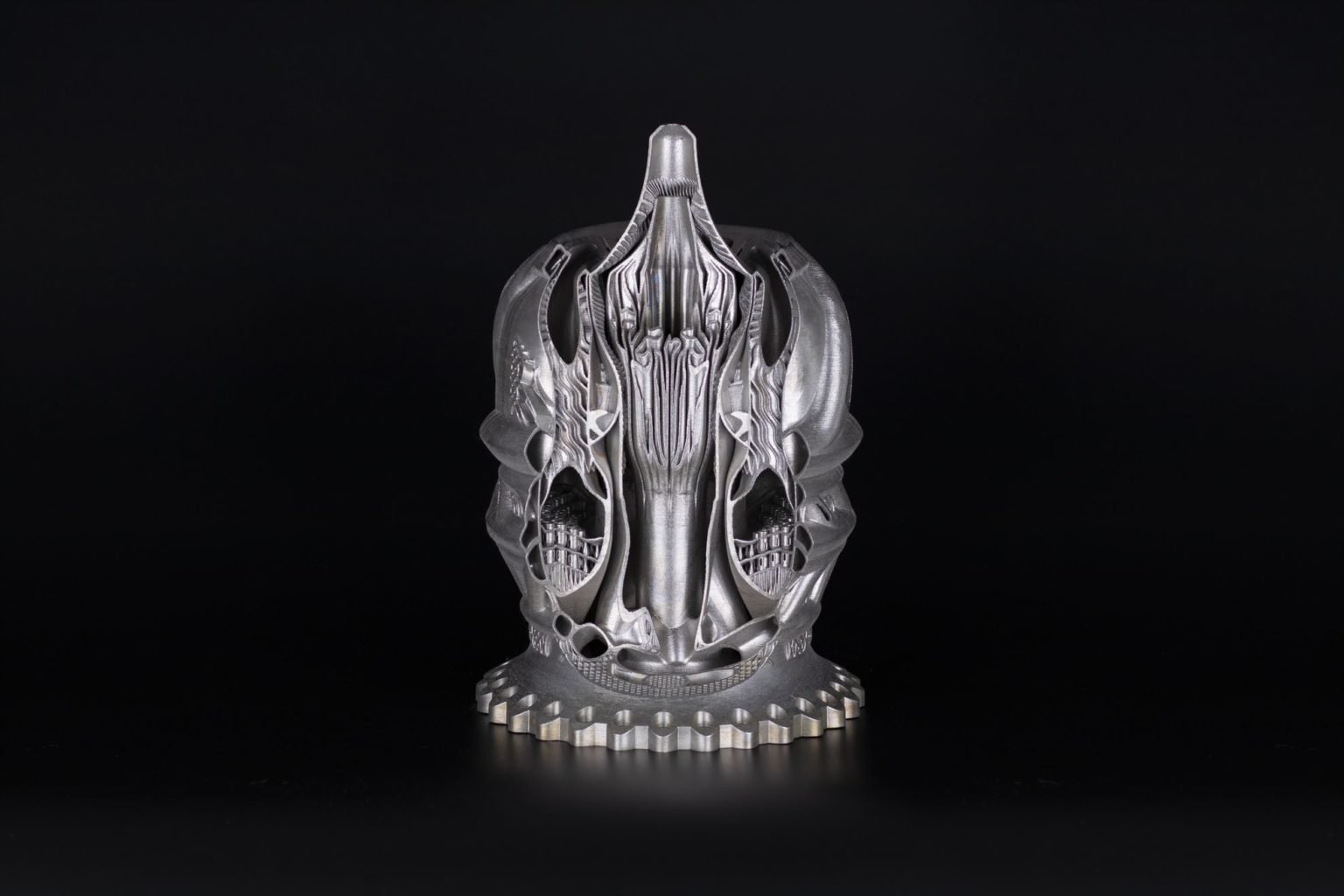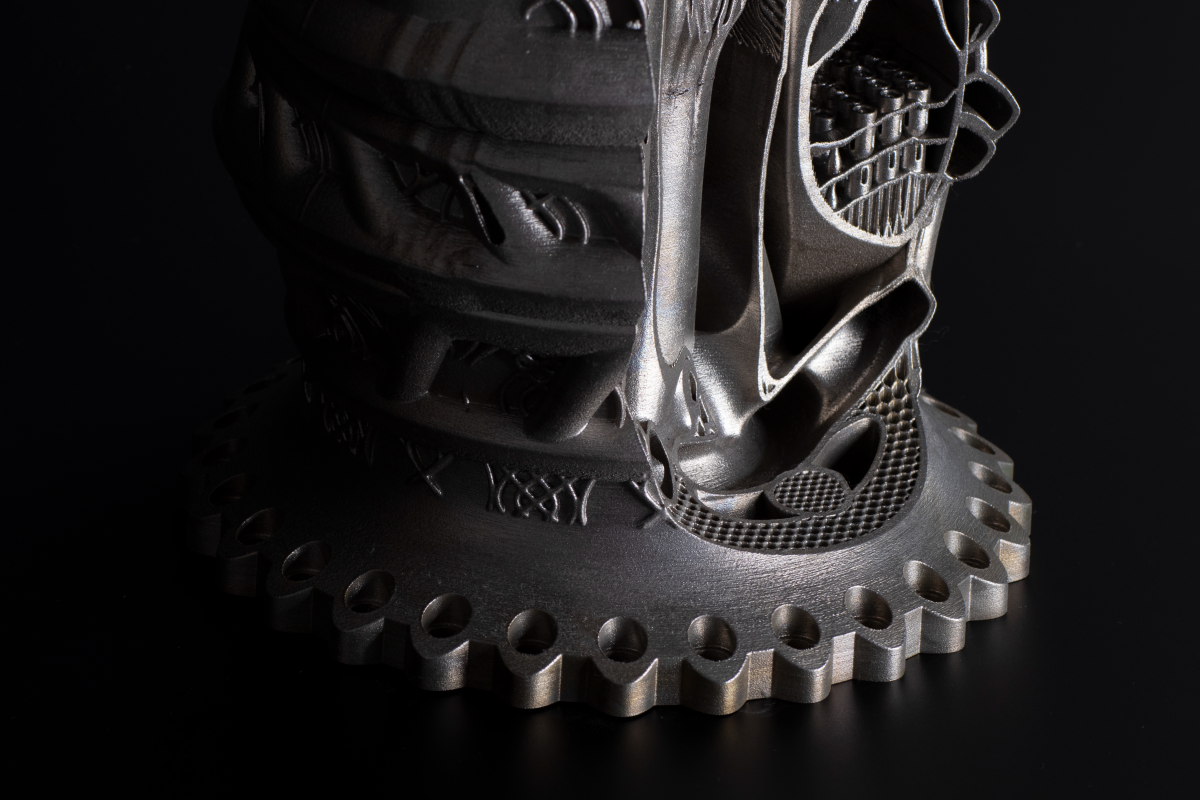In the realm of aerospace technology, AI and 3D printing are joining forces to revolutionize the design and manufacturing of propulsion engines. One of the most intriguing developments in this area is the aerospike engine, a concept that has been around since the 1960s but has only recently been realized thanks to these advanced technologies.
The aerospike engine is unique in that it promises a performance advantage over traditional bell nozzles of up to 20 percent during atmospheric ascent. However, the concept posed thermal challenges that engineers could not readily surmount with traditional design and manufacturing methods. This is where AI and 3D printing come in.

Do You Like This Article So Far?
Signup To Our Newsletter to be Notified About Another One.
Hyperganic, a company at the forefront of this innovation, has developed a parameterized set of algorithms that describes how to construct such engines. During its prototype iteration, hundreds of viable variants were generated, some of which were selected to be 3D printed. One of these stands as the most complex 3D-printed object to date and the first algorithmically designed rocket engine to exist.
The aerospike engine was printed from a copper alloy, standing at 80 cm tall. A smaller 40 cm version was also printed from Inconel-718, demonstrating the versatility of the design and manufacturing process. This achievement obliterates the limits of what can be actualized with Additive Manufacturing when empowered by Algorithmic Engineering.

Do You Like This Article So Far?
Signup To Our Newsletter to be Notified About Another One.
The use of AI in the design process allows for quick iteration cycles within seconds and minutes, as opposed to weeks or months. This means engineers can explore a much larger solution space and focus on system-level optimizations rather than spending their time on manual, repetitive CAD drawings.
It’s important to note that while this aerospike engine represents a significant step forward in propulsion technology, it was created as an art piece rather than a piece of functional hardware. Nevertheless, it serves as a powerful demonstration of what is possible when AI and 3D printing are applied to aerospace engineering.
For more details on the design and manufacturing process of the Aerospike engine, you can read the full articles on Hackaday and Hyperganic.

Disclaimer: This article is intended for informational purposes only. The aerospike engine discussed herein was created as an art piece and not as a functional piece of hardware. The information provided does not constitute professional advice and should not be relied upon for decision-making purposes. Always consult with a qualified professional for specific advice tailored to your circumstances.





9 Comments
cfhgqcenez
AI And 3D Printing: Revolutionizing Propulsion Engine Design – To Digital Tech
acfhgqcenez
cfhgqcenez http://www.g8j7ybq0hi485e6to0l5qc4o77g3a563s.org/
[url=http://www.g8j7ybq0hi485e6to0l5qc4o77g3a563s.org/]ucfhgqcenez[/url]
psqiogzmk
AI And 3D Printing: Revolutionizing Propulsion Engine Design – To Digital Tech
[url=http://www.g771ax0w045mc1hg0fu5y3c7344ctwh9s.org/]upsqiogzmk[/url]
apsqiogzmk
psqiogzmk http://www.g771ax0w045mc1hg0fu5y3c7344ctwh9s.org/
vjbiqf
AI And 3D Printing: Revolutionizing Propulsion Engine Design – To Digital Tech
vjbiqf http://www.ggin4x66pri54548uz65g37b015qx6uhs.org/
[url=http://www.ggin4x66pri54548uz65g37b015qx6uhs.org/]uvjbiqf[/url]
avjbiqf
xjipfqqstq
AI And 3D Printing: Revolutionizing Propulsion Engine Design – To Digital Tech
[url=http://www.g863444zhm9pij9kw5d69394s0l4lgqms.org/]uxjipfqqstq[/url]
xjipfqqstq http://www.g863444zhm9pij9kw5d69394s0l4lgqms.org/
axjipfqqstq
fuck
vurcazkircazpatliycaz.6rDIcgLHTa44
eski rahatiniz olmayacak
daktilogibigibi.vbhnw9nm5YI5
eski rahatiniz olmayacak
daxktilogibigibi.T3n4lo9d6LxJ
eskort siteleri
yandanxvurulmus.3ipTl8PfNFpW
minx
minx xyandanxvurulmus.g2a6E6r8Pygv